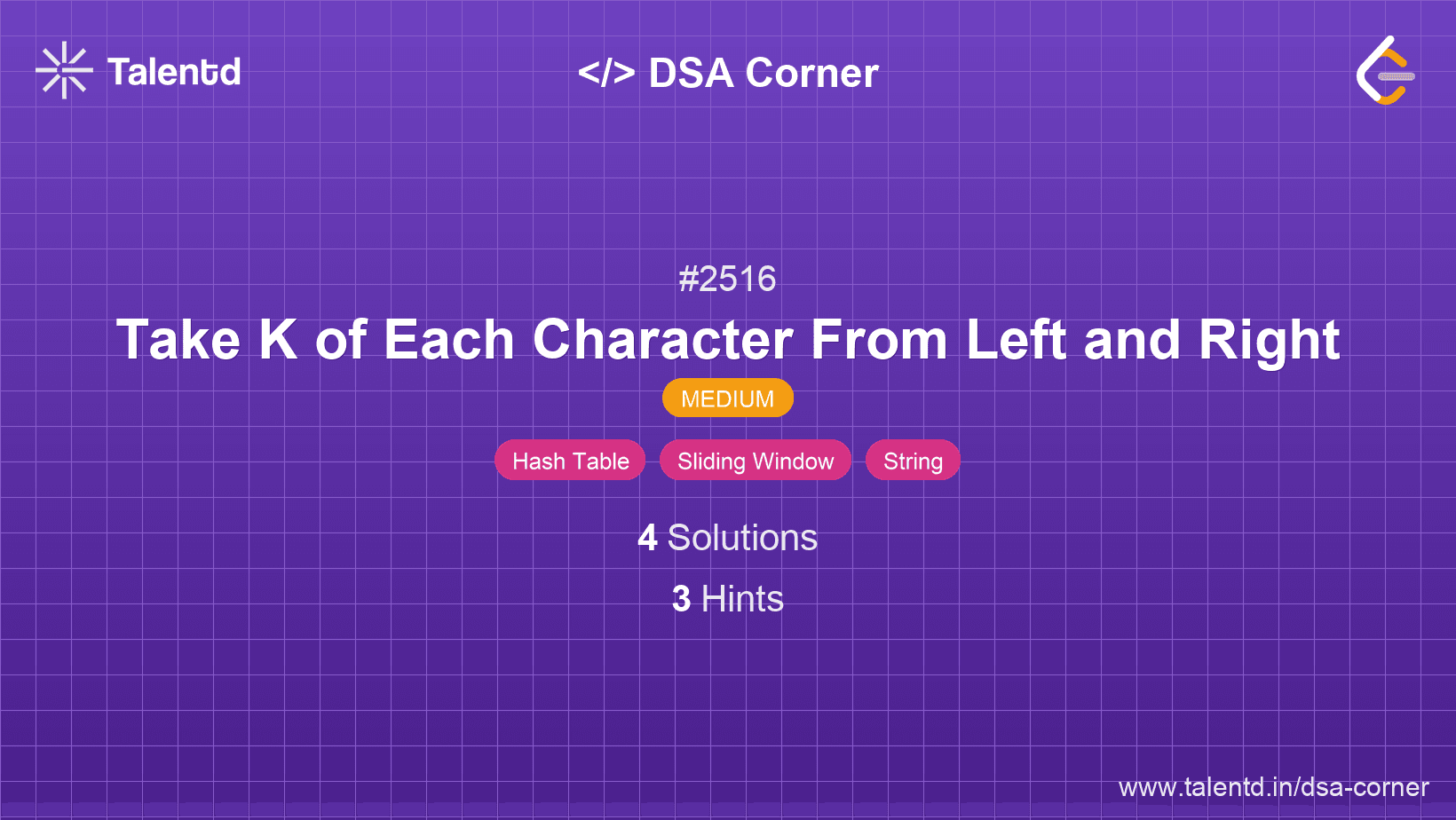
Sponsored
Sponsored
This approach utilizes a two-pointer technique to simultaneously check from the left and from the right, aiming to fulfill the requirement of obtaining at least 'k' of each character ('a', 'b', 'c'). The key idea is to keep track of character counts from both ends and to update pointers strategically to achieve the minimum number of moves.
Time Complexity: O(n), where n is the length of the string, as every character is processed at most twice.
Space Complexity: O(1), as the storage requirement does not scale with input size beyond a fixed size.
1#include <iostream>
2#include <unordered_map>
3#include <string>
4using namespace std;
5
6int takeCharacters(string s, int k) {
7 unordered_map<char, int> count;
8 for (char c : s) count[c]++;
9 if (count['a'] < k || count['b'] < k || count['c'] < k) return -1;
10
11 int n = s.size();
12 int total_steps = n, left = 0, right = 0;
13 unordered_map<char, int> current_count;
14
15 for (char& c : s) {
16 current_count[c]++;
17 while (current_count['a'] >= k && current_count['b'] >= k && current_count['c'] >= k) {
18 total_steps = min(total_steps, left + 1 + n - right);
19 current_count[s[right]]--;
20 right++;
21 }
22 left++;
23 }
24 return total_steps;
25}This C++ solution leverages similar logic to the Python version, using hashmap for counting and fulfilling the requirements. The two-pointer technique ensures efficient traversal of the string to minimize movements by dynamically adjusting the window boundaries. It takes utilize of unordered_map for counting operations.
This approach involves identifying the largest contiguous subarray that lacks at least 'k' of one or more characters. By calculating the complement of such subarrays, we aim to find the minimal total of minutes required.
Time Complexity: O(n), stemming from a single pass to compute with sliding window technique.
Space Complexity: O(1) as the space needed is independent of the input size.
1import java.util.*;
2
3
The Java implementation calculates the shortest segment where all characters meet the conditions less than `k`. The required length is derived from the complement idea and uses a greedy sliding window strategy to find the maximum length of allowable segments, yielding the minimal minutes required for removal.